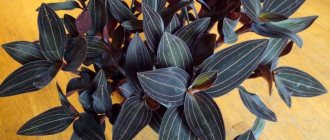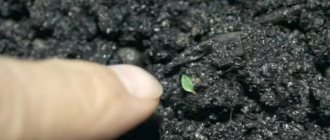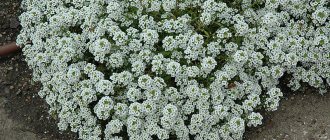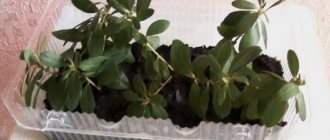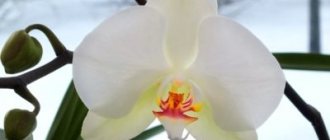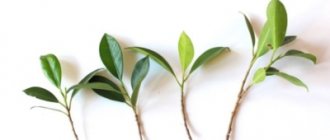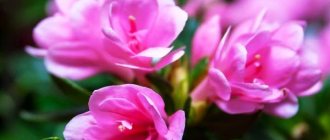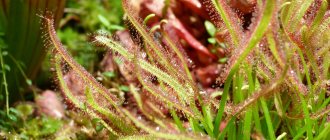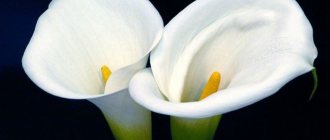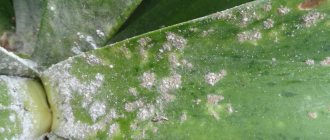Azaleas are valued for the abundance and beauty of their blooms. Photos with beautiful flowers do not leave anyone indifferent, and flower growers have a desire to admire such beauty in person. In addition, the buds bloom in winter, when there is a particularly lack of bright colors. Planting and growing indoor rhododendron at home requires knowledge and strict adherence to flower care rules. But even the capriciousness of the azalea will not prevent a novice gardener who really decides to grow this plant from caring for it.
Description of the plant
Azalea, often found on sale under the name "indoor rhododendron", is part of the genus Rhododendron, which belongs to the Ericaceae family. Although this division is quite arbitrary. Azaleas are compact evergreens suitable for indoor cultivation. Rhododendrons are distinguished by the fact that they shed their leaves for the winter and, due to their large dimensions, are used only in landscape design.
The dimensions of rhododendrons sometimes reach impressive sizes.
The name of the plant was given by the famous Swedish botanist and systematizer Carl Linnaeus. Translated from Greek it means “dry”. This is what an azalea looks like before flowering.
Europe became acquainted with azaleas quite a long time ago, at the end of the 17th century. However, this plant began to be widely cultivated only 50 years later. And the first breeding hybrids appeared only two centuries later. The plant appeared in Russia at the beginning of the 20th century.
Europeans believe that a blooming azalea brings happiness to the home. Therefore, those who grow it always try to ensure that on the Christmas table there is a pot with a bush densely strewn with bright buds.
In nature, azaleas are compact, low shrubs. They can most often be found in Southeast Asia, Japan and China. But some species live in Western Europe, the USA, Russia (Caucasus, Far East, Eastern Siberia).
The azalea bush is characterized by intensive branching. Young shoots are densely covered with short “pile” of grayish or light brown color; as they mature, they become smooth. The leaves are small (2.5–4 cm in length), ellipsoid or lanceolate, densely pubescent on the underside. They are thin, but tough, smooth to the touch, dark green, glossy and shiny. Flowers on very short stalks are located in the axils of the leaves, 2–6 pieces each .
Most azalea species live in Southeast Asia
Azalea buds open on New Year's Eve or immediately after it. There are so many of them that the leaves are practically invisible. Flowering continues until mid-spring. Azaleas bloom annually when they are 3–4 years old.
Japanese rhododendron
A houseplant whose homeland is considered to be the island of Honshu, located in Japan. This is a branched deciduous shrub, which in its natural habitat often reaches two meters in height. The stems appear bare, but small silvery bristles can be seen on them.
The leaves of the plant have an oblong shape and slight fluff on both sides. In autumn, their shade turns orange-red, which is why the plant fits perfectly into almost any interior and creates a cozy atmosphere. The flowers reach a diameter of 8 centimeters and have the appearance of a bell. Most often they are collected in small racemose inflorescences, the aroma of which will be heard even in neighboring rooms behind locked doors. Various colors add special sophistication to the inflorescences: yellow, red, orange. The flowering period begins in mid-May and lasts about two weeks. This is a fairly cold-resistant variety that can also be grown outside without any problems.
How to create optimal conditions for a plant
Azalea is not well adapted to the microclimate of modern apartments, especially when heating radiators are running there. Therefore, the gardener will have to try to create conditions suitable for her and maintain them.
Table: required microclimate for growing azaleas indoors (temperature, spraying, lighting)
| Factor | Recommendations |
| Location | The best option is a window sill facing east or west. Regular ventilation of the room is mandatory. In summer, azalea can live on a balcony, veranda or in the garden. If possible, bury the flower along with the pot in the shade of a tree. The plant is returned back to the room in early or mid-August, without waiting for cold weather. |
| Lighting | Bright diffused light and protection from direct sunlight. In winter and in cloudy weather, fluorescent or special phytolamps are used to extend daylight hours to 10 hours. |
| Temperature | 12–15ºС during the active growing season and 6–8ºС in autumn (approximately 1.5–2 months). For selection hybrids - 20–22ºС and 14–16ºС, respectively. To ensure optimal performance, the pot is covered with snow or ice. This temperature is a necessary condition for the formation of new flower buds. Azalea has a very negative attitude towards its sharp fluctuations (in any direction). |
| Air humidity | The optimal figure is about 70%. Azalea categorically does not tolerate dry air. In summer, during extreme heat and during the heating season, it is regularly sprayed (so that drops of water do not fall on the petals). |
Azalea loves bright light, but does not tolerate direct sunlight.
How to plant and replant
When replanting, you should be careful, it is better to work with gloves, not forgetting about the toxicity of the plant.
Time and reasons for transplantation
Azalea grows quite quickly and branches intensively, so young plants need annual replanting. For adults, one procedure once every 2-3 years is enough, when the roots tightly entwine the earthen ball or a layer of moss appears on the surface of the soil. You can replant the plant immediately after flowering.
Choosing a pot
Azaleas have a superficial root system, so they do not need a large and deep pot. The best option is a container similar to a salad bowl or soup plate.
The azalea pot should be shallow
Soil composition
Azaleas prefer an acidic substrate, which is quite atypical for houseplants (pH 4.5–5.0). It is maintained at the required level by watering the flower once every 5-6 weeks with a 0.2% solution of citric acid or aspirin (tablet per 1 cup of water). Other requirements for the soil are nutritional value, fibrousness, looseness and good aeration. There is ready-made soil on sale, designed specifically for rhododendrons (most often, pure heather soil), but you can prepare it yourself from coniferous soil, peat chips and coarse river sand (6: 3: 1).
Soil for azaleas can be purchased at the store, but experienced gardeners prefer to prepare it themselves
How to replant an azalea
The step-by-step transplant process is as follows:
- Remove the old plant from the pot, trying to destroy the earthen ball as little as possible. This is easier to do if you water the soil moderately about 30–45 minutes in advance.
- Using a sharp, disinfected knife, cut off approximately 1.5–2 cm of fringe at the bottom of the earthen ball. You can also make shallow cuts on the sides and slightly fluff the roots.
- Pour expanded clay or other drainage material into a new pot with a layer of at least 3 cm. On top - about the same amount of new substrate.
- Place the earthen ball in a new container, add fresh soil. Gently shake the pot several times to distribute the soil evenly.
- Water the plant thoroughly. The best option is to immerse it for 45–60 minutes in a basin of water at room temperature, then allow excess moisture to drain.
- Place the pot in a wide planter, filling the space between the walls with wet sphagnum moss or coconut fiber. As it dries, it needs to be moistened.
- The roots of the azalea will gradually become exposed - this is a natural process. To prevent them from drying out, mulch the soil in the pot with peat chips, wood shavings, sawdust, and pine needles every 4–6 months.
Azaleas are transplanted using the transshipment method
Features of transplantation after purchase
Flower growers advise replanting azaleas immediately after purchase. This must be done due to the fact that plants, as a rule, are in transport soil and are treated with various synthetic substances to preserve their presentation. However, azaleas are often purchased while they are in bloom, and replanting in this state is difficult for the plant to tolerate. Therefore, the choice remains with the florist.
How to properly care for a plant
An azalea at home can be preserved for a long time only if you scrupulously follow all the recommendations for caring for the flower.
Watering: when, how, how much
The substrate in the container with the plant should always be slightly moist. Both overdrying (even short-term) of the soil and stagnation of moisture in the pot are equally destructive for the flower. Alternate between regular watering from a watering can with a long narrow spout and the immersion method. After 4–5 hours, excess moisture must be drained from the pan.
Most often, orchids are watered using the immersion method, but this method is also quite suitable for azaleas.
In optimal azalea conditions, one watering every two days is sufficient. In extreme heat, their number can reach up to two per day. The plant does not like very warm water; it is enough to warm it to room temperature. For sanitary purposes and to increase air humidity, it is useful to spray the azalea and the surrounding air with a fine spray bottle weekly or even twice a week (except for the flowering period).
Only soft water is used, ideally rain or melt water. Tap water should be left for at least a day with the addition of citric acid or apple cider vinegar (until a precipitate forms in the form of whitish or grayish flakes), passed through a filter or boiled.
Feeding: what fertilizers will be needed
Azaleas require feeding from late spring to mid-summer, as well as during the formation of buds, at the end of flowering and at the beginning of active growth. When new flower buds are formed, natural organic matter (infusions of cow manure and bird droppings), alternating with complex mineral fertilizers, is most beneficial. It is enough to feed the plant once every 20–25 days. Forming buds love superphosphate (1.5 g per 1 liter of water). Azaleas are watered with the solution twice with an interval of 7–10 days. The rest of the time, ammonium sulfate, ammonium nitrate and other nitrogen-containing fertilizers (2 g per 1 liter of water) are suitable.
There are special fertilizers for azaleas; the feeding solution is prepared strictly according to the instructions
Azalea really does not like chlorine, so before purchasing a specific product, carefully study the composition.
Trimming
The more magnificent the bush, the fewer buds it produces. Therefore, adult plants are pruned immediately after flowering, leaving 4–5 leaves on all branches formed last year. Shoots that violate the configuration of the crown, are curved, or weakly growing - are cut to the ground. Young shoots next to the developing flower buds are carefully plucked out.
Azalea grows quickly, so it needs regular pruning.
Formation of a tree on a headquarters (bonsai)
Using pruning, you can create a tree with a trunk approximately 20–30 cm high. To do this, choose the strongest and most even shoot, getting rid of all the rest. It is fixed in a vertical position, tied to a support and turning the pot every 2-3 days. All lateral growth is immediately removed. When the stem reaches the desired height, the tip of the shoot is pinched. From the shoots that then appear, 4–6 are selected, located at an equal distance from each other around the trunk. Then you can form another 2-3 tiers.
The azalea tree looks very impressive, but requires constant attention from the gardener
It is much easier to form a beautiful bush. Young azaleas are pinched at a height of 10–15 cm. The same is done with shoots that appear annually until the plant takes the shape of a regular ball or close to it.
Caucasian rhododendron
In natural habitats, this variety of azalea can be found exclusively in the Caucasus. The rhododendron flower, photos of which will allow you to become better acquainted with its appearance, is an evergreen shrub reaching a height of 1.5 meters with oblong, leathery leaves of a dark green hue. On the outside the leaf plate is quite smooth, but on the inside it is covered with fairly thin fibers.
The bell-shaped, funnel-shaped flowers have a very delicate aroma that is barely noticeable even in the natural growing environment. Most inflorescences are yellow or pink with subtle green splashes. Caucasian rhododendron flowers are collected in inflorescences consisting of 8-12 pieces. The flowering period occurs at the beginning of summer.
Here are just some of the decorative forms of this species:
- pink-white - the flowering period begins much earlier than other varieties;
- straw yellow – a distinctive feature is red spots on the flowers;
- golden yellow - has yellow inflorescences with small green dots;
- shiny - differs from other varieties with dark pink inflorescences.
All these varieties are quite undemanding in terms of basic care rules, so even a novice amateur gardener can grow them without any problems.
Common mistakes of a beginning gardener
Azalea is quite capricious and most often reacts to errors in care by the absence or short duration of flowering, and deformation of the buds. But other alarming symptoms may also arise. Therefore, you need to learn how to correctly interpret the signals given by the plant.
Table: how azalea reacts to errors in care (why the plant can dry out, shed leaves, look lethargic)
| What does the plant look like? | What is the reason? |
| The leaves droop, lose their tone, and become covered with wrinkles. | Too little and/or infrequent watering or low air humidity. Other possible causes are extreme heat and/or bright sun. |
| Azalea quickly sheds its blooming flowers. | |
| The leaves are turning yellow. | Unsuitable clay substrate or use of hard and/or cold water for irrigation. |
| Leaves fall. | The indoor air is too dry. Another possible cause is inappropriate temperature (high or low). |
| Leaves and young shoots dry out. | Lack of light or improper feeding. This can also be caused by untimely transplantation (especially during flowering) or another stressful situation. |
| Growth is inhibited and very few buds are formed. | Unsuitable soil, too narrow a pot that does not allow the root system to develop properly, or lack of fertilizer. |
Azalea leaf loss may be caused by low indoor humidity or unsuitable temperature.
What to do to resuscitate an azalea
Almost all problems that arise when growing azaleas can be solved.
Azalea doesn't bloom
The plant can bloom if the following factors are met:
- low temperature during the dormant period (6–8°C), necessary for the formation of flower buds;
- the plant should be shaded from direct light;
- sufficient, but not excessive watering;
- proper pruning;
- fertilizing with fertilizers containing phosphorus and potassium;
- choosing the right pot (shallow and low).
Leaves wither and fall
Leaves will fall off due to excessively dry air in the room. A running central heating system should be kept away from the azalea. Do not forget to spray the air, maintaining the required humidity (about 70%).
The plant is drying up
An azalea can dry out due to several factors. To avoid this problem, you should:
- adjust the feeding regime;
- provide the plant with good lighting;
- replant carefully, without damaging the roots and leaves;
- Water and spray the air in a timely manner.
Azalea turns black
Perhaps it is a fungal disease, such as fusarium, or pest damage. To revive the bush, you will have to resort to chemicals. Be also prepared to repot the plant, as fresh soil will help the plant recover.
Leaves curl and turn yellow
This is how the plant can react to an unsuitable substrate. If you are a beginner gardener, it is better not to make the mixture yourself, but to purchase the necessary soil in a specialized store. In addition to this reason, pay attention to the water used for irrigation - to irrigate azaleas, you need soft, room temperature water.
The leaves are drying up
In this case, you also need to reconsider the feeding regime. The cause of drying leaves may be insufficient watering. You need to lower the pot into a container filled with water.
Video: the difficulties of growing azaleas
Let's summarize
- Indoor rhododendron or azalea is a decorative flowerpot with amazing flowers. This plant is very sensitive to care. Exotic will not tolerate heat, prolonged drought, or lack of fertilizing.
- The flower loves acidic soil, shallow pots, moderate lighting and low air temperatures.
- Caring for a flowerpot involves frequent watering (the flower must live in a constantly moistened substrate), equally frequent feeding, pruning and pinching.
- This ornamental crop is propagated by seeds and cuttings, and if your plant is old, it can also be divided.
How to protect azalea from pests
Azaleas have a specific pest - the azalea moth. But this does not mean that it is not attacked by other insects, which are not stopped even by the poisonousness of the plant. However, pathogenic fungi are the most dangerous for the flower.
A number of simple preventive measures will help to significantly reduce the risk of infection:
- placing newly acquired plants in quarantine for at least a month;
- placing indoor flowers and bouquets as far as possible from each other, if possible in different rooms;
- regular ventilation of the room and spraying of azaleas (except for the flowering period);
- strict adherence to plant care recommendations, especially those related to watering and fertilizing;
- using only sterilized soil, clean pots and tools;
- weekly irradiation of azalea leaves with a quartz lamp for 2–3 minutes.
Table: how to save azalea from diseases and pests
| Disease or pest | External manifestations | Control measures |
| Fusarium | Yellowing and withering leaves, rotting shoots and roots. |
|
| Septoria | Rapidly growing red-brown or brown spots on leaves. |
|
| Phyllosticosis | Small irregular ash-gray or brownish spots on the back of the leaves. |
|
| Azalea moth | The caterpillars scrape tissue from the leaves, which become almost transparent, dry out and fall off. |
|
| Spider mite | A thin cobweb entwining the leaves and buds, small brown-black dots on the underside of the leaves. |
|
| Shchitovka | Gray-brown tubercles on the leaves. Gradually they increase in volume, the surrounding tissues change color to red or yellow. |
|
| Mealybug | Whitish coating and lumps on the underside of the leaf and at the base of the shoots. |
|
| Whitefly | Small whitish butterflies that rise from a flower whenever you touch it. |
|
| Thrips | Thin silvery and yellowish streaks, small brown ones - on the underside of the leaves. |
|
Daurian rhododendron
This variety of indoor plant is widespread in Northern Mongolia, Eastern Siberia, Korea, China and the Primorsky Territory. In its natural habitat it grows on rocks or in coniferous forests. It is a spreading evergreen shrub, reaching a height of 2 to 4 meters.
The stems of the plant are covered with thin gray bark, which changes its hue to reddish-brown closer to the base. There is also a slight pubescence at the ends of the shoots, by which you can easily recognize this variety among others. The foliage is quite small, leathery, reaching a length of no more than 3 centimeters. If you touch its upper part, it will be much smoother than the lower part, which has green scales (their intensity varies depending on the age of the plant).
Some of the foliage falls off in the winter, but most remain on the bush throughout the entire cold period. This species is considered one of the most frost-resistant. The shrub easily tolerates cold temperatures down to -40 °C, but this does not mean that the flower does not need to be covered for the winter.
The flowering period lasts about three weeks. At this time, flowers can reach up to 4 centimeters in diameter. The color palette ranges between pink and purple tones. Daurian rhododendron has two varieties:
- low-growing garden hybrid - distinguished by bluish-red edges on the leaves, which reach 5 centimeters in size;
- evergreen plant - has dark leaves, as well as purple-lilac flowers consisting of five petals.
This variety of azalea is ideal for beginner gardeners, as it is easy to care for. The indoor rhododendron flower can also be grown in most regions of Russia, since it tolerates both cold frosts and hot summers.
Flower propagation at home
It is quite difficult to propagate azaleas at home. This applies to all methods.
Azalea reproduces at home rather reluctantly, this does not add to its popularity among gardeners
How to root cuttings
The most suitable time for cuttings is late spring-early summer.
Before planting, azalea cuttings must be treated with a root formation stimulator.
Rooting cuttings: a step-by-step process
- Cut cuttings from young, semi-lignified shoots at an angle of approximately 45º with a sharp, clean knife. Remove the leaves from the bottom half. The optimal cutting length is 5–8 cm.
- Sprinkle the wounds with any powdered root formation stimulator (Kornevin, Zircon, Heteroauxin) or dip the planting material in a solution of one of the preparations for 5–6 hours.
- For rooting, plant the cuttings in containers filled with a mixture of peat chips, perlite, vermiculite, deepening them 1–2 cm. Cover them with transparent bags, cut plastic bottles or glass caps.
- Place the pots in a warm place with a temperature of 22–25ºС, provide bottom heating and bright but diffused light. As it dries, spray the soil with water warmed to room temperature and ventilate the plantings daily for 1–2 hours.
- After 1.5–2 months, roots should appear. When the azalea produces 2-3 new leaves, transplant it into an unheated container filled with coniferous soil.
- After 2-3 months, pinch the top of the bush for more intensive branching. If buds appear, remove them.
- Next spring, replant in soil suitable for adult plants and care for them as usual.
Video: how to propagate azalea from cuttings
Graft
The method is used mainly for rare varieties or for those that are difficult to take root. As a rootstock, use a sprout of another, less capricious azalea, 15–20 cm long with well-developed roots. It is necessary to have an “eye” (growth point) on both cuttings.
- Using a sharp, disinfected razor blade, make oblique cuts of approximately the same length with a depth of no more than 0.5 mm on the rootstock and scion.
- Combine the mother plant and cuttings and wrap them in plastic.
- Place the azalea in a home mini-greenhouse or under a large glass jar in soil suitable for mature plants.
- Do not allow the soil to dry out; ventilate the plant daily. Bottom heating is not needed, but bright diffused light and a temperature of about 25ºC are required.
- As soon as the scion begins to grow, remove the cover. Gradually (over about a month) accustom the azalea to its usual conditions.
The container placed on the pot with the grafted azalea should not touch the plant itself.
Germination of seeds
At home, this method is rarely used. Azalea seeds do not ripen due to the fact that the boxes containing them are cut off immediately after flowering. In addition, such plants do not always retain varietal characteristics - the shade of the petals and their fullness. It makes sense to purchase only seeds collected a maximum of three months before purchase.
To grow an azalea from seeds, you need the following algorithm of actions:
- Fill shallow containers with peat crumbs. It needs to be moistened with a spray bottle and leveled.
- In early spring, sow the seeds without covering them with soil.
- Cover the container with glass or plastic wrap and place it on the sunniest windowsill. Provide bottom heating.
- Ventilate the plantings daily and spray the substrate with soft, warm water.
- The first shoots will appear in 10–12 days, mass shoots in 20–25. On average, 7 out of 10 seeds germinate.
- When the first pair (false leaves) have fully unfurled, pick up the azaleas, planting them 3-4 cm apart. Bury them all the way down to the leaves.
- At the end of summer, move the seedlings into individual pots with a diameter of 5–7 cm, filled with soil suitable for adult plants.
Adams rhododendron
This plant most often grows in the Far East, as well as Tibet. In these regions it can be found on rocky slopes and mountain forests with hard soils. The shrub reaches up to 1.5 meters in height and lives for decades. The leaves are quite dense, matte, oblong in shape. Their length and width average about two centimeters. But the flowers are in most cases pink, up to 15 millimeters in diameter. They are collected in corymbose inflorescences, usually consisting of 7-15 units.

